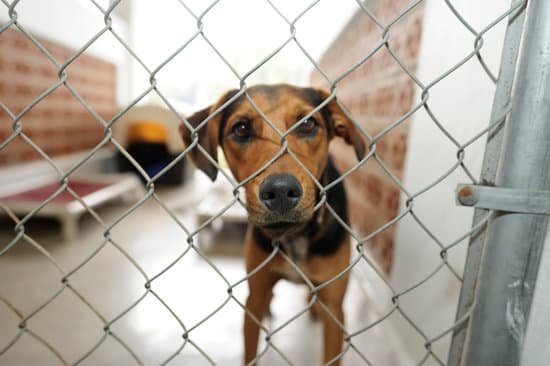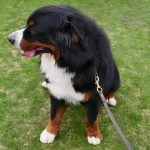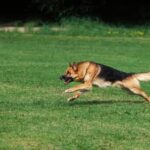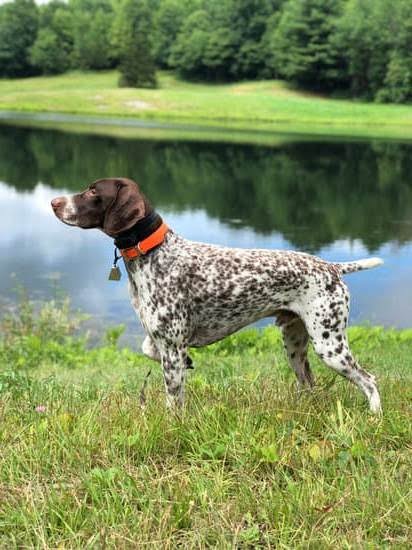Are you interested in learning how to train your dog to hunt pigs? Hunting with dogs has been a long-standing tradition, and it takes a special kind of training to prepare them for the unique challenges of pig hunting. In this article, we will explore the essential elements of training your dog for pig hunting, from selecting the right breed to advanced hunting techniques.
Pig hunting requires a different set of skills compared to other types of hunting, and having a well-trained dog can make all the difference in a successful outing. Understanding the role of hunting dogs in pig hunting is crucial for preparing your canine companion for this type of adventure.
In this comprehensive guide, we will delve into the various aspects of training your dog for pig hunting. From choosing the most suitable breed to safety measures and final preparations, we will provide you with the knowledge and tools needed to train your dog effectively. So, let’s embark on this journey together as we discover how to train your dog to become an invaluable partner in pig hunting.
Choosing the Right Breed
When it comes to pig hunting, choosing the right breed of dog is crucial. Not all breeds are well-suited for this type of hunting, so it’s important to select a breed that has the natural instincts and physical abilities necessary for success. Here are some dog breeds that are known for their prowess in pig hunting:
- American Pit Bull Terrier: Known for its strength and tenacity, the pit bull terrier is often used for catching and holding pigs until the hunter arrives.
- Catahoula Leopard Dog: This breed is highly regarded for its tracking ability and versatility in hunting various types of game, including pigs.
- Black Mouth Cur: Bred specifically for hunting wild boar, the black mouth cur is known for its intelligence and courage in facing large and aggressive prey.
It’s important to note that while these breeds are commonly used for pig hunting, individual characteristics can vary. It’s essential to assess each dog’s temperament and instincts before embarking on training for pig hunting.
While these breeds may be well-suited for pig hunting, it’s also possible to train other types of dogs for this purpose with the proper training and guidance from experienced professionals. Ultimately, selecting a dog with the right temperament and instincts will set the stage for successful pig hunting experiences in the future.
Basic Obedience Training
When training your dog to hunt pigs, basic obedience is crucial for the safety of both your dog and yourself. Here are some essential tips for teaching your dog to respond to commands:
1. Start with simple commands: Begin by teaching your dog basic commands such as sit, stay, come, and heel. These commands will form the foundation for more advanced hunting training.
2. Use positive reinforcement: When your dog follows a command correctly, reward them with praise, treats, or playtime. Positive reinforcement will encourage good behavior and make the training process more enjoyable for your dog.
3. Be consistent: Consistency is key when it comes to obedience training. Use the same verbal cues and hand signals each time you give a command, and practice regularly to reinforce your dog’s understanding.
Once your dog has mastered basic obedience training, they will be better prepared for the more advanced stages of pig hunting training. Remember that patience and consistency are essential when working with your furry companion.
Scent Training
Once your dog becomes familiar with the scent, you can start incorporating it into games and activities. Hide scented objects and encourage your dog to find them using their sense of smell. This will not only reinforce their ability to recognize pig scent but also make the training more enjoyable for them.
As your dog progresses, you can gradually increase the difficulty of the scent tracking exercises. Take them to different environments such as forests or fields, where they can practice identifying pig scent amidst various distractions. Regular practice and positive reinforcement are key to developing your dog’s tracking skills and ensuring they are well-prepared for pig hunting in real-life hunting scenarios.
| Aspect | Tips |
|---|---|
| Introducing Scent | Use pig hide or scented training aids to familiarize your dog with pig scent. |
| Scent Tracking Games | Incorporate pig scent into games and encourage your dog to find scented objects. |
| Real-Life Environments | Practice tracking in different environments such as forests or fields. |
Exposing Your Dog to the Hunting Environment
Introduction to Exposure Training
Exposing your dog to the hunting environment is a crucial step in training them for pig hunting. This process involves getting your dog comfortable with the sights, sounds, and smells of the wilderness. It also includes introducing them to various terrains and weather conditions that they may encounter during hunting trips.
Gradual Exposure
It’s important to start exposing your dog to the hunting environment gradually. Begin by taking them on short walks in wooded areas or open fields, allowing them to explore and become familiar with their surroundings. Gradually increase the duration and complexity of these outings as your dog becomes more at ease in the wilderness.
Socialization and Desensitization
During exposure training, it’s also essential to socialize your dog with other animals they may encounter while pig hunting, such as livestock or wildlife. Additionally, desensitize them to loud noises like gunshots or rustling foliage. This can be achieved through positive reinforcement techniques and patience so that your dog remains calm and focused during actual pig hunting expeditions.
By effectively exposing your dog to the hunting environment, you are preparing them for a successful and safe pig hunting experience. This process should be approached with care and patience to ensure that your canine companion is confident and ready for the challenges of the wilderness.
Working With a Professional Trainer
Benefits of Professional Training
Seeking the help of a professional trainer can provide numerous benefits for both you and your dog. These trainers have extensive experience in working with hunting dogs and understand the specific skills and techniques needed for pig hunting. They can provide personalized guidance based on your dog’s unique strengths and weaknesses, ultimately accelerating the training process.
Choosing the Right Trainer
When selecting a professional trainer for your hunting dog, it’s crucial to do thorough research. Look for trainers who specialize in working with hunting breeds and have a proven track record of success. Reading reviews, asking for recommendations from fellow hunters, and observing training sessions are great ways to evaluate a potential trainer’s expertise.
Advanced Techniques and Strategies
An experienced trainer can teach advanced hunting techniques and strategies that may be difficult to master on your own. This includes refining your dog’s ability to navigate challenging terrains, track elusive pigs, and work effectively within a team of other hunting dogs. Additionally, trainers can provide valuable insight into reading your dog’s behavior in the field, ensuring that you maximize their potential during pig hunting expeditions.
Safety Measures
Pig hunting can be an exhilarating experience for both dogs and their owners, but it is important to consider the potential dangers involved. As much as it is a thrilling adventure, there are risks that come with this activity, especially for your canine companion. It is crucial to prepare adequately and take necessary safety measures to ensure the well-being of your hunting dog.
One of the main dangers in pig hunting is the risk of physical injury. Pigs can be aggressive and have the ability to inflict serious harm on dogs through their sharp tusks. To mitigate this risk, it is important to invest in protective gear for your dog such as a cut vest or chest plate. These items can provide essential protection against lacerations and puncture wounds during a hunting excursion.
In addition to physical risks, there are also environmental hazards to consider when pig hunting with your dog. This includes exposure to parasites and diseases that pigs may carry.
Prior to embarking on a hunting trip, it is important to ensure that your canine companion is up-to-date on vaccinations and preventative medications as recommended by your veterinarian. Furthermore, thorough checks for ticks or other parasites after each hunt are essential in safeguarding your dog’s health and well-being.
| Dangers of Pig Hunting | Safety Measures |
|---|---|
| Risk of physical injury from pigs | Invest in protective gear such as cut vest or chest plate |
| Exposure to parasites and diseases from pigs | Ensure dog’s vaccinations are up-to-date; conduct thorough checks for ticks after each hunt |
Final Preparations
In conclusion, training your dog to hunt pigs can be a rewarding experience for both you and your furry companion. By understanding the role of hunting dogs in pig hunting and choosing the right breed, you are setting the foundation for success. Basic obedience training and scent training are essential for developing your dog’s skills, and exposing them to the hunting environment will help them become comfortable in the wilderness.
Seeking guidance from a professional trainer can take your dog’s hunting abilities to the next level, and it’s important to always prioritize safety measures when preparing for pig hunting. From outfitting your dog with protective gear to being aware of potential dangers in the hunting environment, ensuring your dog’s safety should always be a top priority.
As you make final preparations for your dog’s first pig hunting experience, remember to stay patient and consistent in your training. Encouraging positive behavior and providing plenty of support will help build confidence in your dog as they take on this new challenge. With the right preparation and care, you and your dog can forge a strong bond through the exhilarating experience of pig hunting together.
Frequently Asked Questions
How Do You Train a Dog to Hunt Hogs?
Training a dog to hunt hogs involves starting with basic obedience training. This includes commands like sit, stay, and come, as well as leash training. Once the dog has mastered these skills, specific hunting training can begin.
This may involve introducing the dog to the scent of pigs and teaching it to track and locate them. Advanced training may also include teaching the dog to bay or confront the hog without getting hurt.
What Is the Best Dog for Hunting Pigs?
The best dog for hunting pigs is typically a breed that has been specifically bred for hunting or working with livestock, such as Catahoula Leopard Dogs, Black Mouth Curs, or American Pit Bull Terriers. These breeds are known for their strong tracking abilities, intelligence, and courage when confronting hogs.
However, the best dog for pig hunting ultimately depends on the specific requirements of the hunt and the individual characteristics of the dog.
How Do Dogs Hunt Pigs?
Dogs hunt pigs by using their keen sense of smell to track and locate them. Once they have found a pig’s scent trail, they will follow it until they locate the animal.
In some cases, dogs may also be trained to confront or corner hogs until human hunters can arrive to dispatch them. Overall, dogs play a crucial role in helping hunters find and control pig populations in many regions where they are considered a nuisance or invasive species.

Welcome to the blog! I am a professional dog trainer and have been working with dogs for many years. In this blog, I will be discussing various topics related to dog training, including tips, tricks, and advice. I hope you find this information helpful and informative. Thanks for reading!





